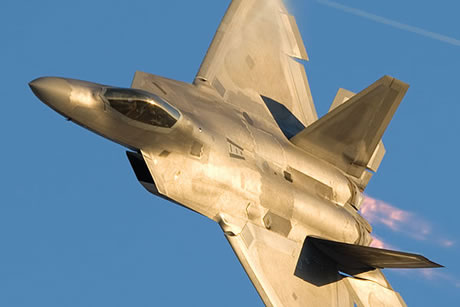Hypoxia (oxygen depravation) conditions often affecting pilots during and after flying in F-22s remain unsolved even after comprehensive investigation was launched after the 2011 Capt. Jeff “Bong” Haney, Alaska Air National Guard pilot was killed in a crash on November 2010. In December 2011 an Air Force investigation determined the cause for the mishap was pilot error although at least 13 cases of hypoxia were reported since the aircraft became operational in 2005.
The investigation did not determine what has caused this error. The Air Force has previously denied the crash was connected with the hypoxia conditions experienced by other pilots in the past. However, following the accident the Raptor fleet was grounded for a total of four months from May till September 2011. Since the F-22 returned to operational flying in september 2011, the Raptors logged 12,00 flight hours and pilots reported at least 11 new cases of hypoxia, CBS 60 Minutes reported. The Air Force has confirmed that they never seen such high rates of hypoxia events in any other aircraft, with 36 out of 200 pilots reporting such incidents. The cause for the problem has not been found, despite extensive investigations by engineers, medical experts, NASA scientists and even Navy medical specialists familiar with similar decompression conditions experienced by Navy divers.
Among the systems inspected for faults were that toxines have entered somehow to the aircraft air and on-board oxygen supply. Although no such toxines were detected, the Air Force installed filters to remove them from the air supply, and collect samples for further investigation, but in some cases, the filters caused more problems than solutions. Other aspects currently explored are the pilot gear, particularly add-on anti-exposure or cold-weather gear worn on top of the standard G-suit. Meanwhile, until a more permanent solution is found, the Raptor pilots are wearing pulse oximeters to monitor their oxygen saturation levels during flight. Any time a pilot’s oxygen saturation drops below 85%, he is required to immediately return to base to allow officials to gather data.
last night CBS’s 60 Minutes aired a special story which included interviews with two F-22 pilots, Maj. Jeremy Gordon and Capt. Josh Wilson, both flying with Langley VA based Air National Guard 192nd Fighter Wing, described hypoxia effects they suffered during flights. Both informed their command in January that they were going to stop flying. General Michael Hostage, head of the Air Combat Command acknowledged the cause of the problem is unknown but said, the Air Force has driven the risk down to a level where the Raptor can safely operate.
Gen. Hostage said a certain amount of risk always is involved and must be balanced with the requirement for the capability. “In a peacetime training circumstance, we want to operate at as low of risk is prudent for the level of training we get out of a mission,” he explained. “When we go into combat, risk goes up, but the reason to assume that risk goes up as well.
“We live in a community where risk is part of our lives,” Hostage continued. “If we think the risk has gone to a level where we just can’t accept it, we either reduce that risk or eliminate it. But right now, we believe that risk — although it’s not as low as we would like it — is low enough to safely operate the airplane at the current tempo.”
Air force officials compare this to the early days of the F-16 Fighting Falcon. Although the first F-16 had its first operational flight in 1970, the combat edge aircrew flight equipment, which was optimized for high-G flight, wasn’t fielded until about 1988, Air Force Maj. Gen. Charles W. Lyon, Air Combat Command’s director of operations said. Hostage said a similar situation exists with the F-22 regarding the unknown effects of human physiology and technology. “What we’re looking at is human physiology and the regime this airplane operates in,” he said. “This airplane does things airplanes have never done before in regimes of flight that we’ve never operated in before.” Hostage said he’s confident a solution for what he calls “the most tactically-capable aircraft in the world” will come.
“We have initiated 17 life support enhancements to the F-22 as direct risk mitigation steps,” Lt. Gen. Janet Wolfenbarger, Assistant Secretary of the U.S. Air Force for Acquisition testified before congress on May 8. Wolfenbarger added that many of these enhancements are already fielded, including a modification to the emergency oxygen activation handle and an aircrew blood oxygen sensor.
May 15, 2012 Update: A week later the Secretary of Defense directed the Air Force to expedite installation of an automatic backup oxygen system for the entire fleet of Raptors. The new oxygen systems will undergo flight tests through November, with installation beginning in December and proceeding in January 2013 at a rate of 10 planes per month. Additionally, the Air Force will have to fly its Raptors near a “proximate landing location” to make sure that pilots can land quickly if their planes’ oxygen systems begin to fail. Spencer Ackerman reported in Wired Danger Room.

















